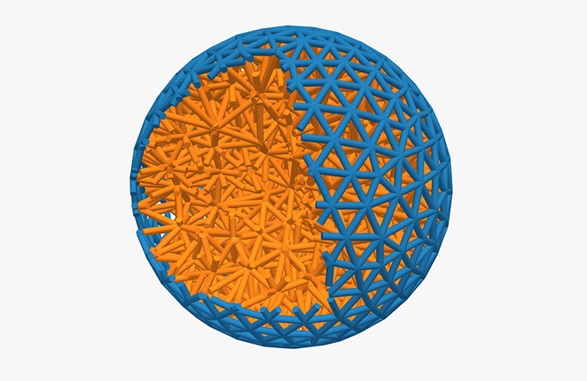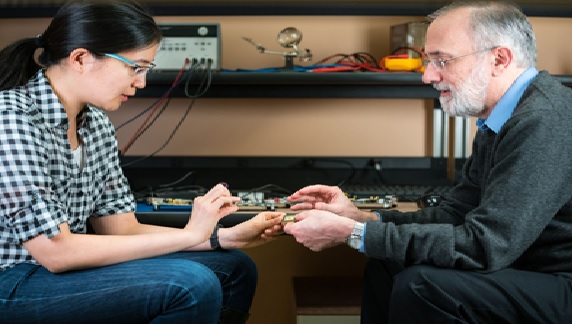The Next Generation of Shape-Shifting Robots
A research team from the Universities of Bath and Birmingham are reinvent the way we design robots.

Figure 1: A simulated ball covered in tiny robots that can distort its shape. Source: University of Bath
Typically, robots, like robotic arms, are controlled by a single central controller. The research team, however, create robots that are made from many individual units that act individually but cooperatively to determine the machine’s movement.
The researchers are doing this using active matter, collections of many active agents that resist the way that ordinary soft materials move. Typical soft materials will shrink into a sphere, like water beading into droplets, to create the smallest surface area possible.[1]
The researchers developed theory and simulations that described a 3D soft solid whose surface experiences active stresses. They found that these active stresses expand the surface of the material, pulling the solid underneath along with it, and causing a global shape change.
The researchers found that the precise shape adopted by the solid could then be tailored by altering the elastic properties of the material.
In the next phase of this work – which has already begun – the researchers will apply this general principle to design specific robots, such as soft arms or self-swimming materials. They will also look at collective behaviour – for example, what happens when you have many active solids, all packed together.[2]
Using this concept, soft, flexible machines powered by robots embedded in their surface could be created. One application could be drug delivery by shaping the size of capsules and coating the surface of nanoparticles in a responsive, active material. This in turn could have a dramatic effect on how a drug interacts with cells in the body.
Robots have proved themselves to be great assistants in performing humanly inaccessible tasks. Their ability to work continuously in harsh conditions makes them ideal companions for people involved in medical and rescue operations. [3]
References:
- https://www.therobotreport.com/researchers-aim-to-create-soft-shape-changing-robots/
- https://scitechdaily.com/active-matter-breakthrough-enables-shape-shifting-next-generation-robots/
- https://www.electronicsforu.com/news/whats-new/next-generation-shape-shifting-robots
Cite this article:
Sri Vasagi K (2022), The Next Generation of Shape-Shifting Robots, AnaTechMaz, pp. 84















